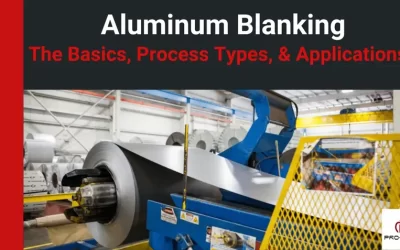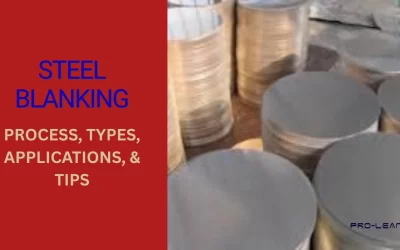
Although a sheet metal bracket is not an end-user product, it is critical for connecting components that fix, attach, hold, and support other metal parts. Sometimes brackets also serve aesthetic purposes. Therefore, metal brackets are popular in sheet metal fabrication, from construction and automotive to military and defense.
Depending on the need, sheet metal manufacturers fabricate U, L Z, offset, and other types of brackets using different metal forming techniques. The use of design rules, selection of material, and type, and applying the right formin method is essential for the precision and performance of brackets.
Furthermore, we will discuss the material options for brackets, fabrication methods, design guidelines, applications, examples, and other related aspects.
Let’s start it!
What is a Sheet Metal Bracket?

Sheet metal bracket fabrication
Sheet metal bracket refers to an “intermediate part” in fabrication projects as it is used to mount or assemble different components. Typically, metal sheets with a thickness range of 0.3 to 6 mm, and plates with thickness up to 20mm. Sheet metal shearing, laser cutting, bending, punching, stamping, and other forming techniques are used to shape the bracket based on the design complexity.
Brackets are used to mount the parts on walls, structures, and secondary parts. Typically, they involve a threaded hole (sometimes unthreaded), where screws can be fit for mounting and connecting purposes. Meanwhile, some brackets include eaves and parapets instead of hole & fastening features. These are especially found in the construction and architectural items.
Subsequently, Stainless steel, cold rolled steel, titanium, aluminum, copper, brass, and other materials are used in the sheet metal bracket fabrications.
Try Prolean Now!
Types of Brackets
Several types of metal brackets can be made with sheet metal fabrication and some minor machining operations. L, Z, U, offset, and angle types are the most common types and are defined by their shape & functionality.
- L Brackets

L-shaped metal bracket
L-shaped brackets are the simplest and most common ones, perfect 90 °or 120° bends with the desired length on both flanges. This is used to attach different devices and tools and for repair uses of architectural and construction walls.
Using simple bend setup or die can be used to fabricate the L-brackets. A single-bend operation achieves this.
- Z Brackets

Z-shaped bracket
Z-shaped brackets are formed by two consequent bending operations, where bends are in the opposite direction. These are used for wall shelves, light fixtures, furniture, etc. Consequently, brackets involve two holes on two flanges for the mounting.
- U Brackets

U-shaped bracket
U-shaped brackets are achieved by forming a straight sheet along two bending axes. Typically, the base section of the bracket holds the support wall surface, followed by the mounting of parts parallelly with two flanges. Meanwhile, the base length should be adjusted according to the flange length.
- Angle Plate Bracket

Angle plate bracket
These types of sheet metal brackets involve a fixed angled bend (anything from 0 to 90°) that supports & reinforces welds joints, construction structures, beams, etc. Based on the geometry of the application where angle plate brackets are used, they can be triangular, acute-angled, etc.
- Offset Bracket

Offset bracket
It is the asymmetric bracket that can support component offsets from the mounting surface at a certain distance. Offset brackets are ideal for the angle and position support for different applications.
The complexity of design and adjusting features on offset brackets makes them more challenging to fabricate. They require advanced techniques like die-punch stamping, progressive die bending, etc.
- Gusset Bracket

Gusset bracket
The gusset bracket is comparable with this angle plate, but it is more diverse in both shapes and applicability. You can understand this as an extra material support on primary parts and joints to add strength, toughness, and other properties. They can have triangular, angled, straight faces, or any other custom shape.
Metal Forming Methods for Bracket Fabrications
First, laser or shear cutting is used to cut the blank sheet into the desired length and width. Then, various forming methods are employed based on the complexity of the design.
| Forming Method | Description |
| Bending | Deforming the metal along a straight line to create angles or curves. |
| Laser Cutting + Bending | First laser cutting to create profiles, then bending them to final shape. |
| Stamping | A die to form shapes, cuts, or holes by pressing into the metal sheet. |
| Deep Drawing | It draws the metal sheet into a die to create deeper, cup-like shapes. |
| Hydroforming | A high-pressure hydraulic fluid shapes a sheet against a die. |
| Roll Forming | A continuous shaping of metal sheets by passing them through rollers |
| Punching | It creates holes or specific cutouts by pressing a punch |
| Blanking | It Cuts flat and predefined shapes with the punch and die setup. |
Materials Used in Fabrication of Brackets

Sheet metal brackets of different materials
Aluminum, Stainless Steel, and Steel brackets are the most common ones in sheet metal fabrications. However, other metals & alloys like brass, copper, titanium, and rolled steel are also used as per application requirements.
- Stainless Steel Brackets
Stainless steel brackets are highly resistant to corrosion and have good formability. They are used in high-stress and harsh environmental conditions.
- Aluminum Brackets
Aluminum is a lightweight material with high strength-to-weight material, but more suitable for wear and corrosion. They are common in automotive, electrical, aerospace, and electronics applications.
- Steel Brackets
Steel brackets have high strength and are used in high-stress environments like stainless steel. Additionally, the cost & availability of steel alloys makes them more popular for diverse applications. Although corrosion is an issue, it can be treated with coating and other techniques to prevent this.
- Brass Brackets
Brass has good electrical conductivity and appearance, both of these properties are beneficial in metal bracket fabrication for electrical and thermal applications. Additionally, its appearance makes it a good material choice for aesthetic brackets.
- Other Materials
Besides the above material options, copper, rolled steel, titanium, zinc, etc are also used for the metal bracket fabrication.
Try Prolean Now!
Sheet Metal Design Rules for Brackets

Example of sheet metal bracket design
Bend angle, hole, and other features in sheet metal brackets need to be considered during the design phase to ensure manufacturability and precision.
Here are the seven simple design rules;
1. For the L bracket, the bending angle is 90° in most cases. It can be up to 120° but not more than that. You need to limit extreme angles to avoid bending issues for less ductile or thicker sheets.
2. Ensure the hole size(diameter and depth) are correct for corresponding screws or fasteners.
3. The bed line in bracket-to-hole distance should be at least 2.5 times of thickness plus the bending radius.
Bend line to hole ≥ 2.5 x thickness + Bend Radius
4. In Z, U, and other types of brackets requiring multiple bends, ensure the distance between two bend lines is three times material thickness plus bend radius.
Bend to Bend= 3 x thickness + Bend radius
5. If the brackets have welds, indicate them clearly in the bracket fabrication design. It increases the cost. Additionally, try to avoid the weld if it is not necessary for their performance.
6. If required, plan and consider the post-machining for creating holes or crafting complex features.
7. The Height of the flange should be four-time sheet thickness plus bending radius.
Min. Length= 4 x Thickness + Bend radius
Applications of Metal Brackets
As we have discussed in the previous section, different types of brackets are used across the construction, furniture, architectural, electrical enclosures, and industrial sectors. The table below shows the uses of brackets in different sectors;
| Industry | Real-World Examples |
| Construction & Architecture |
– Steel frameworks – HVAC ducts – Metal roofing sheets – Curtain walls – Elevator panels – Door kick plates |
| Automotive |
– Car hoods – Body panels – Fuel tanks – Mufflers – Dashboard frames – Battery casings in electric vehicles |
| Electrical |
– Circuit breaker cabinets – Lighting housings – Transformer casings – Wiring conduits – Control panels |
| Aerospace |
– Airplane wing panels – Fuselage sections – Helicopter blades – Landing gear assemblies – Fuel reservoirs – Cockpit panels |
| Energy |
– Solar panel frames – Wind turbine shells – Heat exchanger fins – Oil pipelines – Battery racks – Power plant ducting |
| Medical |
– Instrument trays – Bed frames – Surgical knives – MRI machine covers – Laboratory benches – Autoclave casings |
| Defense & Military |
– Tank armor – Aircraft structural supports – Radar enclosures – Weapon casings – Missile frames |
Read More: Cheap sheet metal fabrication
Do You Need Custom Metal Brackets?
The material selection, use of right metal bracket fabrication techniques, and available forming operations influence the final precision and quality of brackets. Additionally, the expertise of engineers and operators is essential to achieve optimal results.
ProleanTech provides comprehensive sheet metal services, including sheet metal brackets tailored to specific industrial needs. Our advanced metal fabrication factory is equipped with a laser cutter, die and punch setup, stamping, punching, and other facilities. We can fabricate your bracket designs strictly in accordance with your specifications and requirements.
Try Prolean Now!
Summing Up
There are different types of metal brackets, L, U, Z-shaped, offset, and angle plate. Each of them has a distinct forming sequence and applications. However, mounting or connecting the part is one common purpose for all of these brackets. Your choice depends on the application scenarios and the material being used to make them.
FAQs
What gauge should I use for the Sheet Metal Bracket?
The gauge for a sheet metal bracket typically depends on its intended load capacity and application. Thicker gauges (like 10-14 gauge) are used for heavy loads and high-stress applications. On the other hand, thinner gauges (18-20) work well for lighter applications.
What are the uses of metal sheet brackets?
Metal sheet brackets support or mount structures or mechanical components. They provide stability and reinforcement in frames, panels, shelves, and various other installations.
Is it expensive to manufacture brackets from sheet metals?
Standard materials and simple designs of brackets are affordable, but custom shapes or finishes increase costs.
What are the common materials for the metal brackets?
Metal brackets are commonly made from steel, rolled steel, stainless steel, and aluminum due to their durability, strength, and resistance to corrosion.
How do you decide which metal bracket to use?
Consider load requirements, environmental conditions, and material properties to choose which bracket fulfills your requirements and design specifications.




0 Comments